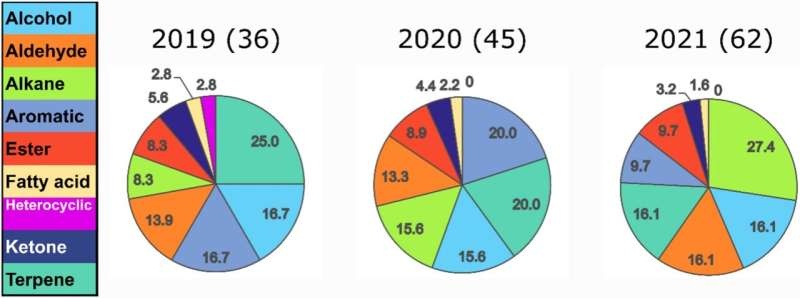Researchers at the University of Tsukuba have made a groundbreaking discovery that could revolutionize the way we approach soil health in soybean fields. By analyzing the volatile organic compound (VOC) profiles of soil, they have uncovered a new and promising method for evaluating the overall health of the soil, paving the way for more sustainable agricultural practices.

The Hidden Guardians of Soil Health: Soil VOCs
Soil health is key to sustainable agriculture, and traditional methods of assessment are typically time-consuming and costly. Soil VOCs are involved in this process,
Analysis of soil organic matter using modern techniques has shown that bacteria and fungi are not only the building blocks for what we think of as more recognizable forms of life, but also a kind of proxy measure or thermometer for fertile soils: viewing their functional complexity gives us windows down into the bewilderingly complex and noisy underground ecosystems.
A team of researchers led by the University of Tsukuba has investigated soil volatile organic compound (VOC) profiles, as shown above in soybean fields across Fukushima Prefecture for 3 years. Having such detailed profiles has enabled the researchers to better understand, in conjunction with data on soil physical properties metabolome, and ionome a replicable profile of soil along with relevant information regarding rhizosphere chemicals and root microbiome.
Currently, the findings have been published as a scientific report in Scientific Reports, which is one of the leading scientific journals in the world. Soil VOC levels increase markedly during the flowering stage of the soybean growth phase — an important life event of plants that this study showed globally for the first time.
Getting to the Roots of Soil Health
Although the strong link between soil VOC profiles and the various ‘omics’ datasets — soil ionome, soil microbiome, soil-metabolome, and physical condition of soil — represents a real advance. They concluded that soil VOCs could potentially be useful bioindicators of increasing functionality in agricultural soils.
But the real power of this discovery stems from the way that it will transform how we think about, and ultimately manage our soil. Through the use of soil VOCs as a diagnostic tool, farmers and researchers can create a clearer picture of the intricate ecosystem buried underneath where they plant their crops and make more informed choices regarding interventions with added benefits for improved health.
For example, a farmer who sees the soil VOC profiles suggest an imbalanced soil microbiome or lack of certain nutrients can then shift to more diverse cover crops, amend fertilizer applications, and eventually move towards more sustainable tillage methods.
This complete picture of soil health assessment is the cornerstone to reaching the full potential of soybean fields and other agricultural systems. Knowledge of how soil VOCs interact with all parts of the soil health system will take us down that road toward a more sustainable and resilient agriculture future.
Conclusion
The ground-breaking study carried out by the University of Tsukuba could change our sustainable management perspective on soil health in not only soybean fields but other crops too. So by using overall soil health as an endpoint, and reliable indicators of that endpoint in the VOC profile, farmers will be better able to make informed decisions about where they can or should intervene; researchers can home in on where to study the biology around soils for greater understanding about how it influences other aspects of agroecosystem function. In an era where new technologies are needed to explore nature and its processes, this paradigm shift in soil health assessment could provide valuable leads toward the food security of the future.
